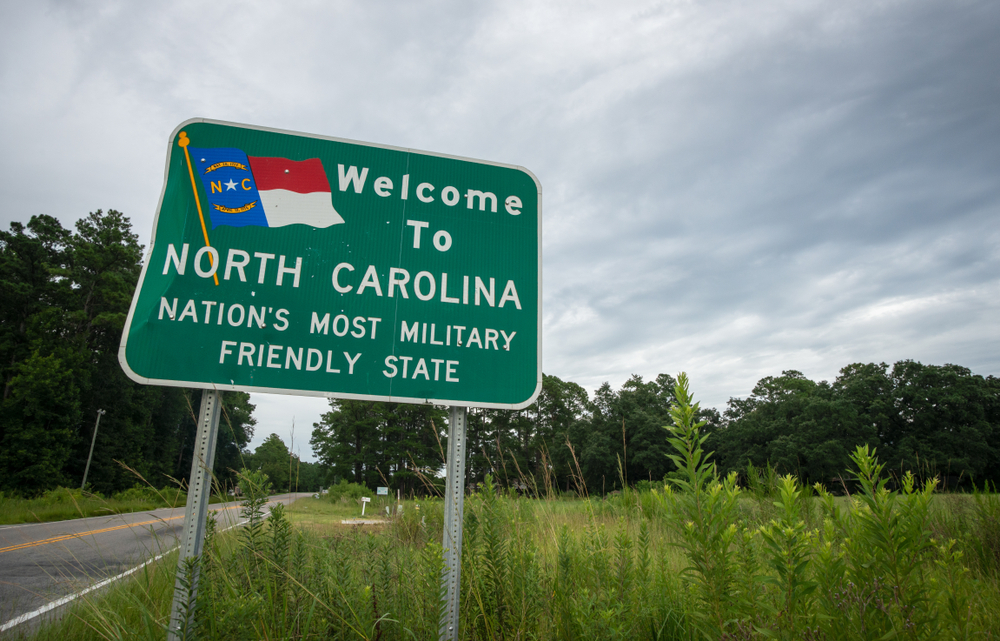For decades, the residents and personnel at Camp Lejeune, one of the largest Marine Corps bases in the US, unknowingly consumed and bathed in contaminated water. This wasn’t just a minor issue; it’s considered one of the largest water contamination incidents in American history.
From the 1950s through the 1980s, the water supply at Camp Lejeune was tainted with industrial solvents and other pollutants. The health implications of this exposure have been far-reaching and devastating, leading to a myriad of health problems for those affected. The government’s response to this crisis, the implications for those exposed, and the ongoing legal battles form a complex and disturbing narrative.
Background of Camp Lejeune Water Contamination
Unraveling the roots of
Camp Lejeune’s water contamination issue sends us back to the mid-20th Century. It’s during this period – between the 1950s and 1980s – that the base residents and personnel unknowingly found themselves the victims of severe water pollution.
The genesis of the issue was anything but immediate. The sources of contamination were a group of harmful chemicals, primarily
industrial solvents and pollutants that leaked into the camp’s water supply system. Over time these harmful substances trickled into the groundwater supplies used for drinking, cooking, and bathing by those residing and working on the site. Notably among the pollutants were compounds such as trichloroethylene (TCE), a metal degreaser, and perchloroethylene (PCE), a dry-cleaning agent.
Flowing silently through the base’s pipes, the polluted water became a ghost assailant hurting Camp Lejeune’s community in the most intimate aspects of their daily lives. Little did they realize that as they drank the water, cooked with it, bathed in it, they were gradually being exposed to a cocktail of harmful and highly toxic substances.
Unsurprisingly, such exposure had grave health impacts. From cancer to birth defects, the litany of health issues resulting from this silent contamination reads like a list of medical horrors. The silent suffering of those affected has since transformed into a loud cry for justice, igniting legal actions and prompting inquiries into the government’s role and response to the disaster.
Yet, despite the unfolding drama and intriguing events, there’s a lot more to unpack about Camp Lejeune’s water contamination crisis. Just as the polluted water infiltrated every corner of the base’s life, the contamination issue has branched into numerous facets and implications beyond health, extending into legal, social, and administrative problems that continue to baffle those involved.
Timeline of the Water Contamination Incident
The roots of the
Camp Lejeune water scandal trace back to the 1950s. By then, industrial operations at the base started to contribute to the release of harmful chemicals into the environment. Among the most toxic were trichloroethylene (TCE) and perchloroethylene (PCE). Both of these solvents were extensively used in machine shops and dry cleaning operations on the camp. Percolating through the soil and into the groundwater, these contaminants found their way into the drinking water supply.
| Year |
Event |
| 1950s |
Start of contamination |
| 1980 |
First discovery of TCE and PCE in water |
| 1984 |
Contaminated wells shut down |
| 1987 |
Legality of water supply questioned |
By the early 1980s, the extent of the problem came to light. In 1980, the first hints were detected and directly linked to TCE and PCE. Testing revealed contamination levels in the water that far exceeded current safety standards. It took four more years, many reports, and inquiries from on-base personnel for the gravity of the situation to be fully acknowledged.
In 1984, the use of implicated wells was ceased. Despite this, the aftereffects were already pronounced, with personnel and residents suffering from an array of health problems. Higher incidences of cancer, birth defects, and other illnesses started coming to the forefront, causing panic and mistrust among the Camp Lejeune community.
However, the issue didn’t stop there. Legal battles ensued as the affected people sought justice and compensation. In 1987, questions regarding the legality and oversight of the water supply service at the base were raised. It sparked a wave of criticism and pushed for stricter regulations and improved waste disposal methods.
Never before had the interplay of medical, legal, environmental, and administrative considerations been so intricate and evident. The lessons learned from the
Camp Lejeune water crisis continue to shape policies and inspire reforms to ensure such a disaster never repeats.
Health Impacts on Residents and Personnel
The water contamination at
Camp Lejeune didn’t just stop at altering the quality of the base’s water supply. It reached deep into the lives of its residents and personnel, causing widespread health issues and concerns. Exposure to toxic chemicals like
TCE and
PCE started showing its effects in the form of various health anomalies.
Individuals who resided on the base during the period of contamination began experiencing a myriad of adverse health conditions. These range from common symptoms that include migraines and skin rashes to severe afflictions like kidney and liver damage. Regardless of just symptoms or severe afflictions, all health issues denote the potential influence of the toxic chemicals on residents’ health.
Reports also show a higher than average incidence of several types of cancer among the base’s population. These cancers include kidney, liver, bladder, and esophageal cancers. According to a study conducted by the
Agency for Toxic Substances and Disease Registry (ATSDR), children born to mothers who lived at Camp Lejeune while pregnant were four times more likely to have birth defects or childhood cancers.
Health concerns were not just limited to the residents. Many former service personnel also reported health anomalies that were potentially due to the contaminated water exposure. These include neurobehavioral effects, non-Hodgkin’s lymphoma, and various other conditions linked to long-term exposure to the toxic chemicals.
The severity and range of these
health issues brought the water crisis to light, sparking contentious legal battles and raising concerns about the legality of Camp Lejeune’s water supply. As a result, solutions for this grave issue have become a priority for officials and institutions at different levels.
Government Response and Accountability
In the wake of these health crises at Camp Lejeune, there couldn’t be passivity. The magnifying glass of accountability focused on the
U.S. government. Legal battles ensued, forcing officials to confront the issue head-on.
Congress responded in 2012, passing the Janey Ensminger Act. Named after a child who tragically lost her life due to the contaminated water, the act vowed to provide medical care for those suffering from conditions linked to the exposure. Through the
U.S. Department of Veterans Affairs (VA), affected veterans are now offered healthcare services, though many voices argue it’s not enough.
The government’s accountability further reflected in its commitment to allocate funds for clean-up and restitution. An impressive
$2.2 billion has been set aside just for the clean-up of the site.
Despite these actions, critics argue there’s still a lack of transparency. With several cases of health problems emerging after the VA claim deadline has passed, there are pleas for the government to pace up its efforts.
| Year |
Actions by the government |
| 1982 |
Discovery of water contamination in Camp Lejeune |
| 1989 |
Camp Lejeune listed as a Superfund site |
| 2012 |
Janey Ensminger Act passed |
The steps towards accountability don’t end here. They also extend to reforming and instituting stringent checks on water supply systems to prevent such occurrences in the future. Denizens of Camp Lejeune and beyond hope that this spotlight on the crisis will not only bring resolution but also serve as a guide for safeguarding other military and residential communities.
While the government is taking steps, there’s growing consensus that the response rate needs improvement. Despite these shortcomings, the strives made so far have underlined the gravity of the situation. They’ve highlighted the urgency of maintaining utmost vigilance on such environmental issues.
Ongoing Legal Battles and Compensation Efforts
Ever since the water contamination crisis shook Camp Lejeune, legal battles have rumbled on. These civil actions are less of squabbles and more about demanding justice for those affected. The Janey Ensminger Act, passed by the Congress, signifies a major outcome of such collective efforts. However, the road ahead is rocky; battles are far from over.
Legal processes involve layers of complexities which stall the pace of proceedings. Navigating these bureaucratic labyrinths has proven time-consuming, making justice a commodity of patience for many victims. Critics argue that this slow pace is a cloak for lack of transparency in the process. Advocates and affected families continue to push for expedited action, but the wheels of bureaucracy turn slowly.
Compensation efforts have been twofold – medical and financial. On the medical front, some headway has been made. The
Janey Ensminger Act, a beacon of hope for many, made medical care a right for those affected. It was a step towards acknowledging the suffering inflicted upon the community. However, access to this medical care isn’t always straightforward. Implementation issues sometimes become barriers to the very aid it promises.
Financial compensation is a different ballgame altogether. Although the government has earmarked
$2.2 billion for clean-up effort, distributions and allocations have shown to be convoluted processes. The money intended to provide reprieve often gets entangled in the thicket of legal formalities, further delaying its reach to the deserving.
Moving forward from these issues does not only denote a
battle to be won. It is about remembering to never forget. The tragedies at Camp Lejeune should remind everyone about the significance of vigilance in environmental issues. However, it’s equally crucial to recognize that justice delayed should not translate to justice denied. Consequently, the government’s role in hastening resolution remains pivotal, and it’s time to increase the tempo.
Prevailing troubles don’t necessarily mean that hope is lost. These are hurdles on the path towards securing safety and security for military and residential communities beyond Camp Lejeune. Perhaps acknowledging these roadblocks could serve as a stepping stone to overcome them.







